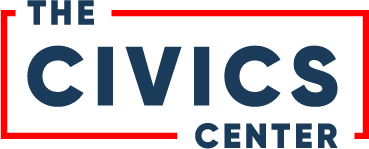Our beautiful yellow map
There are many different kinds of maps.
Some show the present, like where the roads and rivers are.
Some show past events, like the red / blue maps of an election night, proclaiming the count of votes already cast.
There are other maps that show the future. They tell us about opportunity instead of objects or outcomes.
We have created a map like that. And it will blow your mind.
It doesn’t tell us where young people have voted in the past. We can’t do anything about that.
It answers a more important question: Where should we go right now if we want to reach the greatest number of high school seniors who are eligible to register to vote today?
The answer may be one of the best kept secret in American politics.
The answer is ALMOST EVERYWHERE.
HIGH SCHOOL OPPORTUNITY STATES
In 34 states (yellow), students can preregister at least as early as age 17 or if they will be 18 by Nov. 3, 2020. Students can also register to vote at 17 ½ in 4 states (muted yellow). In 12 states (grey), age requirements are more restrictive or more variable. North Dakota does not require voter registration.
In 34 states, from Maine to Hawaii, Florida to Washington, and Utah to Ohio, students can submit their voter registration forms today if they will be 18 by November 2020. Some of these states allow even earlier registration (at age 16), but the main point for students and educators and organizers is simple and critical. Virtually the entire high school senior class in the states shown in bright yellow on our map can submit their voter registration forms right now.
For educators and parents, this means there are opportunities through school curricula or conversations at home to make sure students are actually told they have this right. There is also an opportunity to encourage students to organize events to promote voter registration and develop leadership skills.
For youth organizations, it means new ways to reach students as they become aware of how their lives are shaped by law, policy, and voting.
For policymakers and democracy advocates, it means a chance to turn the gray states yellow and to promote improved implementation of high school voter registration in the yellow states.
But most importantly, for students, our beautiful yellow map means the opportunity to organize with friends and across different groups and schools to make sure everyone is registered before they graduate. It means the chance to become a leader. It means a chance to define a goal and develop a voice. It means a chance to act.
Index of state age requirements for voter registration
The list below classifies states based on the age at which young people can first submit voter registration forms. (As of Jan. 2020.)
Age 16
California, Colorado, Delaware, D.C., Florida, Hawaii, Louisiana, Maine, Maryland, Massachusetts, New York, North Carolina, Oregon, Rhode Island, Utah, Washington (15 states and the District of Columbia)
Age 17
Iowa, Nevada, New Jersey, West Virginia (4 states)
Age 18 by November of even years
Arizona, Kansas, Montana, New Mexico, South Carolina, South Dakota, Vermont, Wyoming (8 states)
Age 18 by November of each year
Connecticut, Illinois, Kentucky, Mississippi, Nebraska, Ohio, Virginia,
(7 states)
Age 17 1/2
Michigan, Missouri, Oklahoma, Georgia
(4 states)
Variable dates (may depend on timing of primaries and special or local elections, contact local election officials for clarification)
Alabama, Arkansas, Indiana, Minnesota, New Hampshire, Pennsylvania, Tennessee, Wisconsin
(8 states)
90 days before age 18
(1 state)
Age 17 and 10 months
Texas
(1 state)
Age 18
(1 state)
No need to register
North Dakota
(1 state)
Note: Some of these states have ambiguous laws. In these cases, we have sought guidance from public officials. The above is for general information and is not legal advice. We encourage you to confirm your eligibility independently before submitting a voter registration form.

